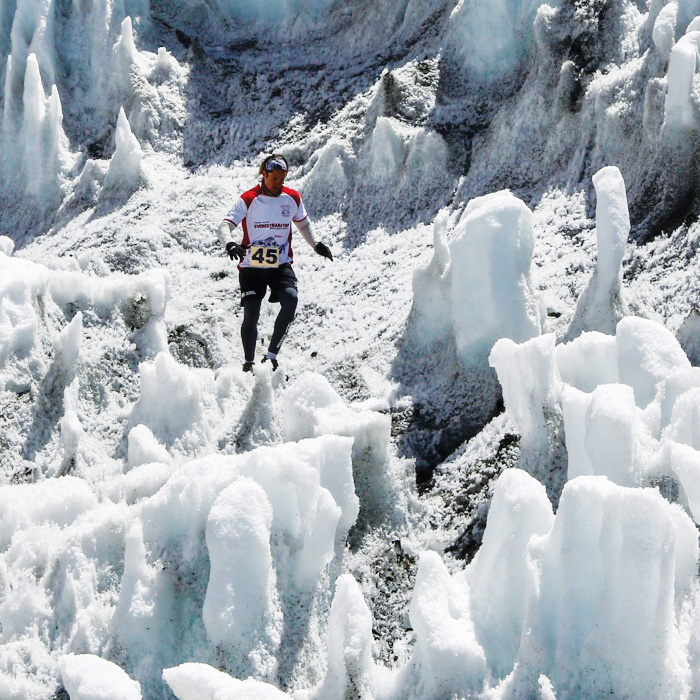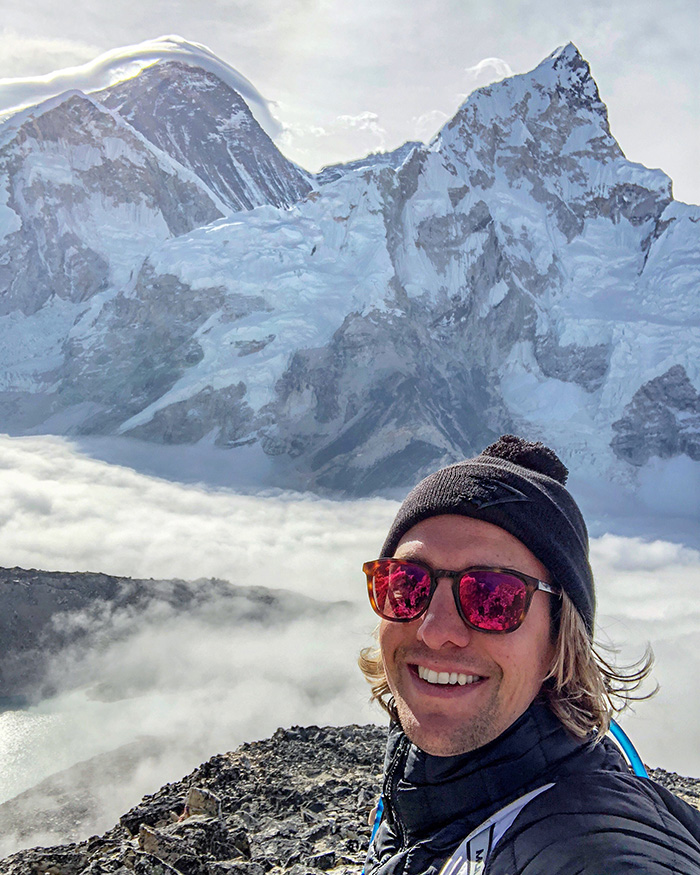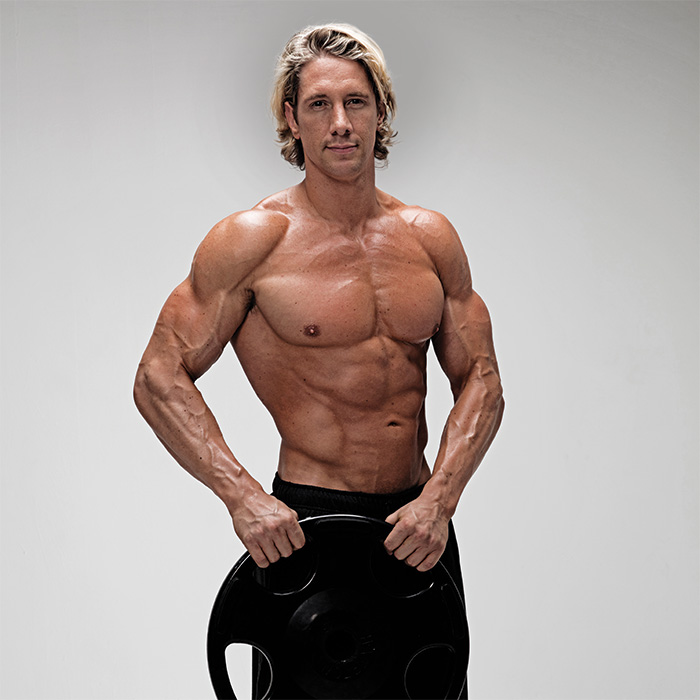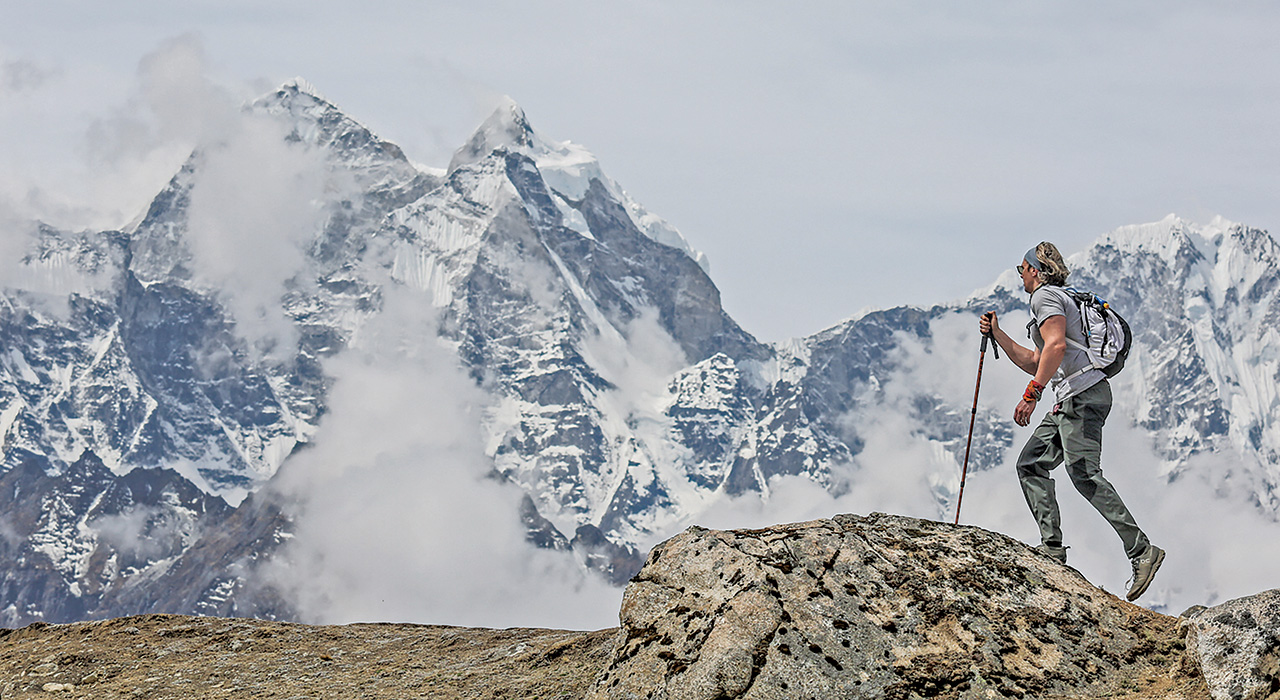Shaun Stafford is a two-time pro fitness world champion, Optimum Nutrition Athlete and cover model who decided to break out of his comfort zone and take his world-beating physique to the world’s highest peak by way of the gruelling Everest Marathon
Climbing Everest was one of those things where I wanted to do something different to push myself physically and mentally in a way that I had never done before. I was looking for that challenge, but didn’t know what it would look like. I met Ash Garrett – a distance runner who has set himself the challenge to run seven marathons at the seven natural wonders of the world. He came to me to see if he could use The Altitude Centre at City Athletic and after a brief chat with him, I was inspired. I asked him if he was doing the Everest Marathon with anyone and I offered myself up as a companion. He looked at me as if I was crazy then asked if I wanted to think about it. I explained I was looking for a challenge and we only had four months to get me from a physique athlete to an adventure marathon runner, so we had better stop talking and get to work. And that was the start of my crazy journey.

What comfort zone?
There were a lot of things going through my mind: would I lose all my muscle? Would I be able to cope with the altitude? Would I even be able to run a marathon, let alone the hardest one on the planet? I made a point to remember why I was doing it and that my number one goal was to complete the event and raise as much money for charity as possible. This took a bit of the pressure off as I knew that I had the strength of mind and work ethic to prepare myself as best as I could.
A learning curve
It took a complete overhaul of my training and nutrition. It was interesting to see how my body reacted to going from short, sharp, intense exercise designed to pack on and maintain muscle, to developing the skill of long-distance running and trying to avoid injury. The shift in energy systems was also something really interesting to experience, as it is good to appreciate and feel the impact rather than just reading about it in a book. I remember the first time I ran a half-marathon and I hadn’t really fuelled myself properly for it. That wall I hit around the 19-20km mark is something I will never forget and really stresses the importance of nutrition and fuelling your body properly.

Finding altitude
We were trekking up to altitudes of 5,500m+, I wanted to get my body prepared. I don’t know how my fitness compared pre-trek to post-trek, but I do know that I was one of a very small number of people who weren’t affected by any symptoms of High Altitude Mountain Sickness. And there were some very fit people taking part in this race! I do put this down to all the hypoxic training I did prior to the race. Something I did note was that it got much easier the lower we got during the race. Over the course we went up and over 4 mountains and the lower we got, the easier it was to breathe and perform, despite being further and further into the race. You also sleep much better at lower altitudes after coming down which is a vital part of performance and recovery.
How bodybuilding helped
I was much stronger than a lot of the other athletes: trekking and running up the hills was comparatively my strong suit despite being the heaviest runner at the event. My legs were strong and powered up the extremely steep gradients. This kind of helped me stay mentally focussed too as I could see myself gaining ground when others around me were finding it tough. I also think that bodybuilders are used to pain and discipline over a long period of time: I was away for over 3 weeks and the conditions were tough. I think being used to long “preps” for shows helps with keeping the mind on track as counting down the days to the race is pretty similar to counting down the days to a show!

How the body adapts
I tracked my exercise and calorie expenditure on my Samsung GearFit2 Pro fitness tracker and then went out of my way to replace the calories I had burnt during the day through eating everything and anything in sight. As for the muscle mass, unfortunately there was not a lot I could do. Being away for over 3 weeks with very little protein, zero resistance training and spending the majority of the time at a significantly high altitude meant that my body dropped muscle fast.
The aftermath
Now, 6 weeks on from the event and I am only just starting to feel like myself again. My energy was incredibly low after the event and it felt like I had minor symptoms of depression: everything felt hard and you have no excitement to do anything. But getting back into training while giving my mind and body the space to regenerate has helped. I’ve learnt to treat my training as a marathon not a sprint. It’s important to take it session by session and have an overall plan to follow. Being on the mountain also taught me the benefit of having a good support network. This was not only during the race, but on the three week trek – the group dynamic was so important in keeping you positive and moving forward. When other people were low, you picked them up and motivated them, and exactly the same happened when the shoe was on the other foot. The same is important when you are training and dieting: get buy-in from your training partner or loved ones so that even when you are feeling down and in a rut, you can pick each other up and keep moving forward towards your goals.
Find your focus
When it comes to selecting an event, do something that excites you. If you are going to be training for a few months, you want to be excited to either complete the training or learn something new to do with your body. Also, get other people involved to keep you accountable: share it on social media and take everyone’s positive energy to spur you on. Something I found very beneficial was doing the event for charity. Being a force for good in the world is something that not only will keep you inspired, but will also inspire those around you.
PHOTOGRAPHY BY Anuj D. Adhikary







